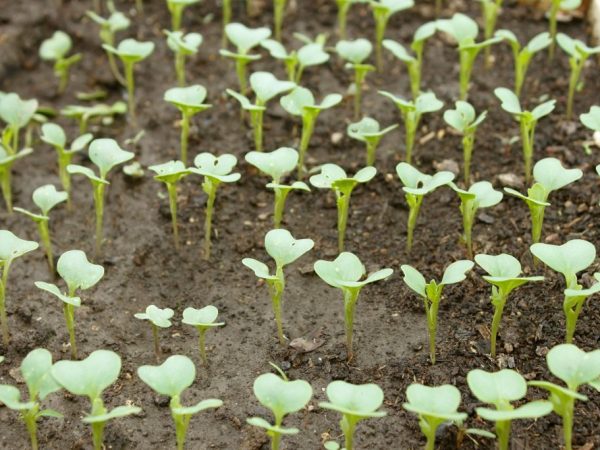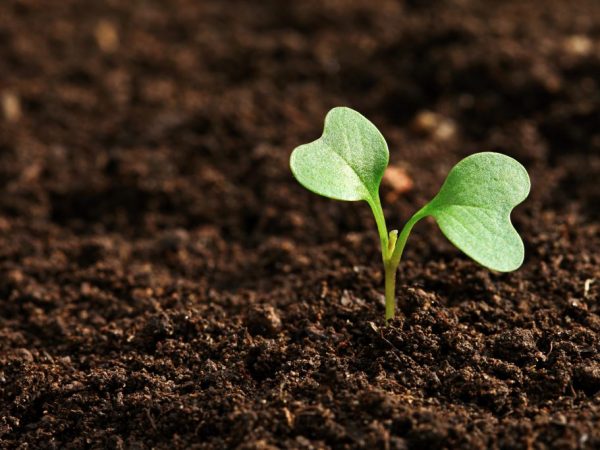The timing of planting cabbage for seedlings
Some gardeners prefer to grow cabbage seedlings at home or in a greenhouse, for fear of using the non-seedling method. Others believe that both are good, and their effectiveness depends on the type and variety of vegetables. Consider when it is better to plant cabbage for seedlings and how to do it correctly.

The timing of planting cabbage for seedlings
Planting timing
Sowing cabbage for seedlings should take into account the ripening period of each type and variety of vegetables. The ripening time of the seedlings themselves is of great importance: they reach the optimal age for transplanting into open ground or into a greenhouse. Sow cabbage in accordance with the climatic conditions typical for the region. It is cold-resistant, but some of its varieties and species are thermophilic.
The timing of sowing cabbage seeds for seedlings also depends on the place of cultivation. The heat-loving variety feels good in the apartment, but the cold-resistant variety is too hot there - it needs to be planted at a later date, and then taken out of the house to the street, to the greenhouse or to the balcony.
Planting different varieties
Early ripening varieties of white and red cabbage (purple) yield a harvest as early as 3 months after sowing the seeds. Mid-season varieties take about 5 months to reach maturity. Late - about 6 months.
Seedlings of red cabbage varieties are usually ready for planting 1.5-2 months after sowing the seeds.
Early white cabbage is also transplanted after 1.5-2 months, mid-season cabbage - after a month and a half, and late - after a month.
Brussels sprouts yield in 4 months. After sowing cabbage seeds, seedlings need 1.5 months to ripen. Various varieties of broccoli bear fruit in 3-5 months, and young plants can be transplanted into open ground in a month and a half.
Kohlrabi fruits ripen in 3 months, and seedlings can be planted a month after sowing. The Peking variety yields a harvest in 3 months, and the seedlings of this cabbage become strong and ready for planting in 3 weeks.
Planting of cauliflower seedlings is carried out in a month and a half after germination, and this species matures in 3-6 months, depending on the variety.
Recommended timing
Sowing cabbage seeds is done in mid-April, it is better - immediately to the greenhouse under the arches. This is the easiest way, in which you do not need to transplant plants and carry boxes from home to street. Suitable temperature conditions are created in the greenhouse: before seed germination - 20 ° C, after germination - 15 ° C, and then - 8 ° C. The advantage of this approach is good lighting of young plants.
Some gardeners prefer to plant cabbage seeds for seedlings at the end of March and for the first time (before germination) keep a box or peat cups at home. This method is used by Oktyabrina Ganichkina, known to all gardeners: she plants seeds in an ordinary box, and after germination takes it out into the street and covers it. An exception to the rule is planting cauliflower for seedlings.This thermophilic vegetable prefers a temperature of 20-22 ° C throughout the entire seedling season: it does not like either too high or too low temperatures. Planting of cauliflower for seedlings is carried out from the last decade of March to mid-April, and planting in the ground - in the first half of May.
Moon calendar
Seedlings of cabbage will grow healthy and strong if sown on favorable dates of the lunar calendar.
Considering the influence of the phases of the moon on the movement of liquids, vegetables with an aerial fruit part are sown on the growing moon.
If you need to transplant or plant vegetables, the growing phase period is also chosen.
In March 2018, it is better to plant seeds on the 18th, 20th, 21st. In April, you can sow seeds on the 4th, 5th, 6th, as well as on the 8th, 9th, 10. In the second half of April, you can plant seeds on the 20th, 21st, 22nd and 23rd (the same days are suitable for transplanting young plants into a greenhouse). In May, plants can be planted on the 8th, 12th, as well as from 19th to 24th.
Unfavorable days

Follow the recommendations
A vegetable does not grow well and grows if it is sown or planted on unfavorable days according to the lunar calendar. It is not worth sowing on March 16 and 30, April 15, 16, 17, 29 and 30. In May, unsuccessful days for transplanting and sowing - 14, 15, 16, also the vegetable is not sown or transplanted on May 28, 29 and 30.
Sowing preparation
The container, seeds and earth are prepared in advance. In order to save space, you can use a wooden box, but some gardeners plant plants separately: in pots or cut bottles, peat cups, tablets, snails. (The latter allow you to maximize the safety of the root system during transplantation.) The earthen substrate can be prepared from ordinary garden soil, compost and peat (2: 1: 1). It is useful to add sawdust (to improve the structure) and wood ash (to increase the nutritional properties of the earth).
Those using the purchased substrate make sure that the acidity of the soil is not high. To lower the acidity, slaked lime is added to the soil. An earthen mixture prepared independently is pre-treated with a manganese solution in order to reduce the risk of pests and diseases in the process of growing vegetables.
Seeds
First of all, the seeds are checked, then the treatment. They are tested in salt water, rejecting those that have surfaced. Treatment-disinfection is carried out with a weak solution of manganese for half an hour. The scheme for planting seeds in a box implies maintaining a distance between grooves of 3 cm, between seeds - 2-3 cm.Each seed is sown to a depth of 1 cm.
The correct air temperature for planting during this period is 20 ° C. After 3-5 days, the seeds give the first shoots. After the bulk of the seeds germinate, the temperature is lowered to 8-15 ° C. Since it is problematic to do this in an apartment, the boxes are daily transferred to the balcony or to the street under the shelter.
Care
Caring for sprouted cabbage seedlings includes additional highlighting, as well as moderate watering, proper feeding, diving (if necessary) and hardening. Growing seedlings requires moderate watering as the topsoil dries out.
Lack of moisture at this stage slows down growth and reduces yields, increases the risk of black leg disease.
The dive is performed after the appearance of the second leaf.
Top dressing is carried out 2 times: during the development of the second leaf and 2 weeks before the planting date. Plants are hardened 10-12 days before the supposed transplantation into the garden. They are left outdoors for longer and longer, and in the last 5 days they have been taken outside at night.
Transplant rules
Young cabbage is planted only after 3-5 leaves appear on it. It is also not worth delaying the transplant, since overgrown plants do not give a good harvest.
The planting scheme depends on the type of vegetable: determining how much to retreat between the holes and rows, they are guided by the size of the head of cabbage.
Usually, early varieties have small heads of cabbage, so the correct distance between holes is 45-50 cm, and between rows - 60 cm (for mini-heads of cabbage, the distance can be reduced). For medium-late and late varieties that produce large heads of cabbage, the distance between the holes should be 60 cm, and between the rows - 70 cm.
Plants are transplanted on a cool, cloudy day, morning or evening. A hole is dug to the depth of a shovel, filled with water, a seedling is placed in it along with an earthen lump. It is easy with plants in peat pots or tablets, but with those grown in a box, care should be taken not to damage the fragile roots. Caring for seedlings after transplanting includes thorough watering and mulching: the soil is well watered, covered with a layer of dry earth, compost, and wood ash.
Helpful information
This vegetable can also be sown in winter. Seeds are sown in late autumn for the winter using special varieties of winter cabbage. In the spring, the awakened seeds are carefully covered, taking care of the access of light and air. Vegetables grow frost-resistant and ripen a month earlier than their spring counterparts.
The Peking variety is valuable for its tasty leaves, but sometimes it goes in color without having time to form a full-fledged head of cabbage. The reason for this is too early planting in open ground, and therefore the plant is subject to a period of low temperatures and long daylight hours. The vegetable often blooms if sown in summer.
The best predecessors for white varieties are cucumbers, tomatoes and potatoes, for kohlrabi - corn and beets, for cauliflower - onions and potatoes, for Peking, Chinese, Brussels sprouts and broccoli - legumes, cucumbers and carrots.
In recent years, ornamental cabbage has become especially popular, for which seedlings can also be grown in a greenhouse or on a windowsill. It is recommended to sow it in late March or early April, and a month later - to plant it in open ground. This vegetable looks very impressive, resembling large exotic flowers of various shapes and shades.


